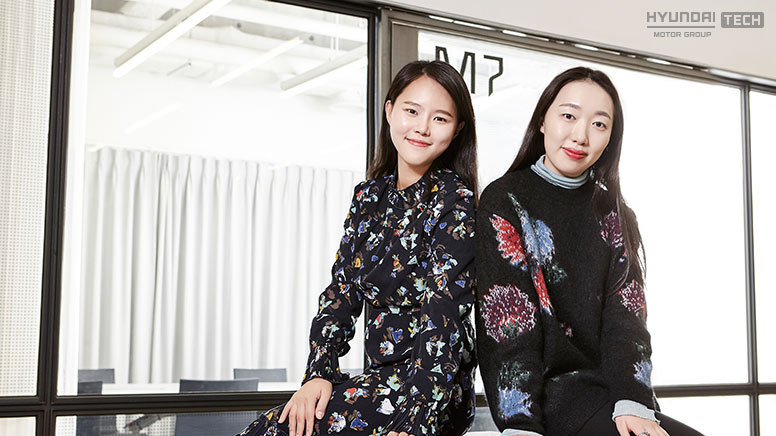Last mile shared services are expanding. We met with Hyundai and Kia’s Future Mobility Development Team, which is improving safety and service levels.

The mobility service market is becoming increasingly crowded by the day with devices such as e-scooters found in every major city. While many people are enthused about last mile mobility services, some people are concerned about safety and parking issues. We interviewed Hyundai-Kia Future Mobility Development team who recently unveiled technologies designed to improve the safety and quality of last mile mobility services.

Q. What were your key responsibilities in the development of the ZET platform?
We work as members of Hyundai-Kia Future Mobility Development team and our main responsibility is user interface development. We were involved in the ZET project from the planning stages to user interface design. We created the ZET app as a proof of concept for last mile ride sharing service business. We are currently working on completing patent work for the ZET service.

Q. Can you provide an overview of the app you developed for the last mile mobility sharing service?
If you have been in the Gangnam area of Seoul, you must have seen e-scooters available for sharing. ZET makes the rental and sharing of e-scooters possible using the app and IoT device attached to the e-scooters. We developed two apps, one for users who rent the e-scooters and the other for administrators to manage the service effectively. We put a lot of effort to make the app as convenient as possible for administrators so that collection, redistribution, repair and charging of devices spread throughout the service area is as convenient as possible. We also recently completed a web site capable of overseeing the operation.
Q. What are the key patented technologies that make ZET stand out?
We completed the development of the ZET service last September and began patent registration work after making some improvements. We applied for seven patents and received approval for six of them. The patents we registered fall into three categories. The first category is for enhancing user experience. Automated reservation system and On Boarding type unlock system. The second category is for operation of the service, such as open platform-based advertisements and commerce service and navigation and parking guide interaction. The third category is for improved safety such as maximum speed limit based on driver records and risk detection and deceleration.

Q. What were the technologies which you made an extra effort for in development?
Operation-related technologies were our top priority. There is a growing concern about e-scooters scattered around the city in a disorderly manner. Furthermore, the collection and redistribution of e-scooters left outside service zones has become an issue. We firmly believe that technologies that guide users to a safe parking spot and advertisement services on a platform for coffee shop owners and other commerce operators can really strengthen the ZET service. We decided to develop technology for the management of free-floating e-scooters and to patent it since it will clearly become an increasingly important issue. We also made an extra effort with regards to safety enhancement features, keeping track of user behavior such as whether they wear helmets and how fast they are driving.
Q. What kind of unexpected challenges have you experienced as you applied for multiple patents in such a short period of time?
We faced a lot of challenges with the patent registration, firstly because mobility services and related technologies already existed. The patent experts and patent attorneys from the IP Development Office provided a lot of very useful support. Lots of things that we expected to be recognized as ”original” were deemed ”unoriginal”, often because technologies for similar business models already existed. Luckily, our patent experts were able to help us make the necessary changes so that we were able to receive approval. Once again, this could not have been done without the support of the IP Development Office.
Q. Six of the seven patent applications were approved. You must have some regrets about the result.
The “Personal Mobility Theft Detection and Response Plan” was the one patent that did not receive approval. Theft of mobility devices can lead to a significant loss of business assets which makes prevention vital. The problem was how to determine whether the device was stolen or not. Our theft response plan was also deemed not original enough to be patented. We learned that we must develop an algorithm which can detect theft.
Q. With the rapid evolution of the last mile mobility service market, do you expect there to be many patent infringement disputes in the future?
Personal mobility sharing services are certainly growing rapidly, with more than ten SMEs in operation in South Korea already. We expect parking and safety issues to become increasingly more prominent over time. We think there needs to be some regulation introduced, to set some basic rules. Some of the mobility service companies are teaming up with car hailing companies or convenience stores to secure parking spots. We certainly hope to avoid disputes over patents with our competitors. Many of our competitors are start-up companies and paying royalty fees could be challenging financially. We think it is important to focus on the development of more patentable technologies. For example, car hailing companies are working on an AI-algorithm which is capable of detecting drunk customers. We want to develop similar technology quickly and possibly before anyone else and incorporate it into our service.
Q. How do you think the technologies developed for the ZET platform will be utilized?
First, the ZET platform could certainly be used for the creation of new personal mobility sharing services. The Open platform-based advertisement and commerce service technology could also be used in many business areas. Although developing new technology is crucial, we also plan to explore applications for the technology that we have already developed.
